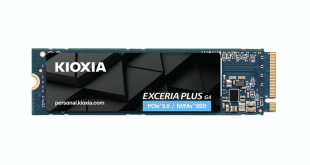The drive arrives in a very stylish black and silver accented box.
On the front is primary information on the unit, showcasing Multi Level Cell technology and TRIM support.
The back of the box offers more detailed specifications, such as performance speeds as well as shock resistance.
The drive itself is also very attractively designed with a subtle scheme sure to offend noone. There is 128GB of flash memory onboard which ties in with previous reports on the Vertex 2 Pro and Vertex LE drives that use Sandforce controllers. The unit is a 2.5” design and weighs under 100 grams.
This positive flash count ‘discrepancy' is actually related to Sandforce demands – there has to be an additional 20% of flash set aside for the DuraWrite technology, which is in place to reduce write amplification. It also helps to increase endurance.
OCZ also supply a 3.5 inch bay adapter which is attached to the rear of the internal box, this seems to be a common (and welcome) addition in 2010.
Interestingly the drive has no DRAM cache which is again related to the use of Sandforce controller. Sandforce has a sophisicated algorithm in place which means it has smaller tables to manage and writes less to the onboard flash. The upside to this system is that because there is less data to write, manufacturers can reduce their overheads by using slightly cheaper memory.
The SF-1200 has cache memory onboard and although no information has been released detailing this, we would assume it to be several megabytes in size. Inside the controller there is a Tensilica DC 570T CPU core, which helps to manage drive performance.
The Vertex 2 uses Intel flash memory seen in the image above as “29F64G08CAMDB”. There are 16 chips in total with 8GB capacity on each of them. When you compare the rated performance of 285 and 275 mb/s for read and write respectively to the original drive, this translates to a huge improvement of around 15% on reads and 55% on writes.
Power consumption is rated at 2 watts when active and 0.5 watts in standby and there is also full RAID 0 support.
 KitGuru KitGuru.net – Tech News | Hardware News | Hardware Reviews | IOS | Mobile | Gaming | Graphics Cards
KitGuru KitGuru.net – Tech News | Hardware News | Hardware Reviews | IOS | Mobile | Gaming | Graphics Cards













OCZ have always been solid SSD drives./ that one is a bit costly though I do agree.
Great drive, good performer. awesome write performance. only issue I have is the pricing. its £300 in our local store. for 100gb? ouch.
im impressed with the performance, only concern is the cost for this performance. I am sure some people will pay it, but the intel 40gb drives seem good value, and in raid 0 outperform most drives in read performance. I know write is much slower, but it seems most people dont really notice it as much. Or am I missing the point?
nice review. outperforms most drives, but for the price, its a bit small i think. Still wouldnt mind one though 🙂
The controller is great. clearly seen in the performance figures. I have to agree with others. almost £300 for 100gb seems a lot of dosh.
I like it, cant quite afford it yet, but it will be my next SSD
sandforce controllers are mega good . all their drives are dear tho. just opart of the costs of owning this controller unit.
These are actually very hard to get in the UK right now, anyone seen them on sale anywhere?
I always like to see real world testing. Seems a solid enough drive, but OCZ are pretty much leaders in this field I think. Bit surprised with the cost however, I was expecting it to be around 200-230./ not 280-300
my friend has one of these, they are very good SSD’s. out of my price league but if I was paying this much for an SSD id go for a 256 gb and spend a bit more.
performance is great, but its not worthy of the price tag. id rather go with a raid 0 system that Zardon reviewed last week. those intel drives would be around 100 less and have more read performance. Write speeds are important for specific jobs, but for a boot OS drive it makes little to no difference.
Great ssd, but for £131.59 at Aria you can get the 50gb vertex 2, and put your OS and main programs on it, and then pick up a cheap traditional hard drive for your data. OK it’s only 50gb, but when you consider the money that can be spent on a processor to speed things up it’s not bad value at all.
I have 6 of the 50s running on different setups with an ahci minimum. If you are worried about cost per gigabyte, don’t think like that. How much was cost per gigabyte when geeks upgraded 286s from 384kb to 2 Meg back in the 80s and how much difference did that make in system speed? $20000 a gig?
These also make fiber optic cards actually go full speed as the drive is capable of doing all the IOPS. The only thing hotter than this in a modest budget are vertex 2 pro and Pcie skinny controller SSD.
Sorry for any typos.